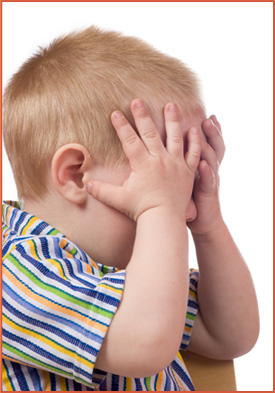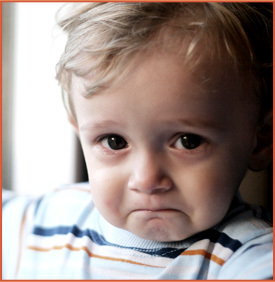| |
Risk Factors Related to Child Maltreatment |
| Parents/caregivers |
Psychological disturbance; cognitive impairment; physical or mental health issues; alcohol and drug use; history of maltreatment as a child; belief in harsh, physical discipline; desire to satisfy unmet emotional needs through the child; unreasonable expectations for child behaviour; young age (most under 30); low educational level |
| Child |
Premature or very sick baby; difficult temperament; inattentiveness and overactivity; developmental problems |
| Family |
Low income; poverty; homelessness; marital instability; social isolation/lack of social supports; domestic violence; frequent moves; large families with closely spaced children; overcrowded living conditions; disorganized household; lack of steady employment; other signs of high life stress; criminal activity |
| Community |
High rates of violence and social isolation; few parks, child care centres, preschool programs, recreation centres, religious or cultural centres to serve as family supports |
| Culture |
Approval of physical force and violence as ways to solve problems |
| PHYSICAL INDICATORS IN CHILDREN |
- Poor hygiene; unkempt; dirty or unbathed state; body odour; early childhood tooth decay; dirty clothes
- Unattended physical problems or medical needs; lack of routine medical and/or dental care
- Temporary abandonment by caregiver (e.g., alone in a car seat)
- Consistent lack of supervision
- Consistent hunger; distended stomach
- Inadequate clothing; inappropriate clothing for the weather
- Chronic diaper rash; infected sores or unattended skin disorders
- Infants or young children may display abnormal growth patterns; stunted growth; thin limbs or weight loss; sunken cheeks; dehydration; paleness; lethargy; poor appetite; unresponsiveness to stimulation
- Delays in development (e.g., motor, language, social skills); not meeting developmental milestones; failure to thrive; clumsiness
|
| BEHAVIOURAL INDICATORS IN CHILDREN |
- Poor social skills and peer relations
- Falls asleep frequently outside of naptime; regularly appears fatigued
- Frequently absent from program(s)
- Begs or steals food; forages and hoards food; frequently "forgets" a lunch
- Self-destructive behaviour
- Delinquent behaviour
- Attention problems
- Negative view of self and others
- Little or indiscriminate crying
- Craves an enormous amount of attention or shows an inordinate amount of affection
- Anxiety, depression
- Listless
- Withdrawn; difficulty interpreting the emotions of others
- Lack of persistence, perseverance and enthusiasm
- Demonstrates lack of attachment to caregiver; may demonstrate indiscriminate attachment to other adults
- Little fear of strangers
- Independence and self-care beyond the norm; has a lot of responsibility at home; left to care for other children; assumes parental role
- Unimaginative play
- Discloses neglect
|
| BEHAVIOURS OBSERVED IN AN ADULT WHO NEGLECT CHILDREN OR CONDITIONS IN THEIR HOMES |
- Fails to provide for the child's basic needs (e.g., food, shelter, education, clothing)
- Fails to ensure that the child receives medical treatment for illness or injury, or basic health care
- Excessive use of punishment
- May indicate that the child was the result of an unwanted pregnancy; may indicate that the child continues to be unwanted
- Frequent negativity about the child; highly critical
- May have unrealistic expectations of the child
- Caregiver puts own needs first
- Family history of neglect and poor parenting
- Overwhelmed with own personal problems and needs; may indicate that the child is hard to care for/hard to feed; describes the child as demanding
- Maintains a chaotic home life, with little evidence of regular routines (e.g., consistently brings the child to care very early, picks up the child very late)
- Has little involvement in the child's life: appears apathetic toward child's daily events; fails to keep appointments regarding the child; fails to use services offered; unresponsive when approached with concerns
- May show ignoring or rejecting behaviour towards the child
- Substance use while parenting; substance use during pregnancy
- May experience domestic violence
- May have acute mental health needs
- May lack support network
- Lack of provision for child's safety; unsafe environment; evidence of human or animal excrement; little food available
- Fails to provide adequate supervision: may be frequently unaware of, or has no concern for the child's whereabouts; leaves the child alone, unattended, in a dangerous place, or in the care of others who are unsuitable or who cannot look after the child safely
|
|
PHYSICAL INDICATORS IN CHILDREN |
- The child does not develop as expected; speech disorders; delays in physical or emotional development
- Frequent complaints of nausea, headaches, or stomach aches without any obvious reason
- Asthma, or severe allergies
- Child fails to thrive
- Wetting or soiling that is non-medical in origin
- Immature or overly mature behaviour
- May have "unusual" appearance (e.g., bizarre haircuts, dress, decorations)
- Dressed differently from other children in the family
|
| BEHAVIOURAL INDICATORS IN CHILDREN |
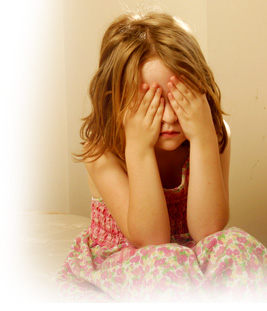
- Extremely passive or undemanding; extreme withdrawal; anxiety; sadness; ADD/ADHD; stress
- Extreme attention-seeking behaviours; extremely demanding, aggressive, angry
- Low self-esteem; severe depression; self-destructive behaviours (e.g., suicide threats or attempts, substance abuse); antisocial or destructive behaviour
- Regressive behaviours and/or habit disorders (e.g., toileting problems, thumb-sucking, rocking, biting, head-banging)
- Sleep disturbances
- Overly compliant; too well mannered; too neat or clean
- Overly self-critical; high self-expectations that result in frustration and failure, or avoidance of activities for fear of failure
- Unrealistic goals to gain adult approval
- Fearful of returning home or being left alone
- Lack of self-confidence
- Poor academic performance
- Irregular attendance at school or program
- Displays extreme inhibition in play
- Runs away from home
- Has a lot of adult responsibility
- Poor peer relationships; lack of emotional connection with others
- Cruel to animals
- Discloses abuse
|
| BEHAVIOURS OBSERVED IN ADULTS WHO ABUSE CHILDREN |
- Consistently degrades, criticizes, insults, ridicules, intimidates, humiliates or belittles the child, verbalizes negative feelings about the child to the child and others
- Compares the child to someone who is disliked or hated
- Terrorizes the child (e.g., threatens the child with physical harm or death, threatens someone or something the child loves; forces the child to watch physical harm being inflicted on a loved one)
- Isolates the child; does not allow the child to have contact with others, both inside and outside the family (e.g., locks the child in a closet or room)
- Consistently rejects or ignores the child; actively refuses to help the child or acknowledge the child's requests, needs or interests
- Blames the child for problems, difficulties, disappointments
- Displays violent behaviours; constant yelling; swearing
- May be inflexible and harsh; exhibits inconsistent behaviour
- Treats and/or describes the child as different from other children and siblings (e.g., does not provide food, clothing and care for child as well as for the other children in the family)
- Corrupts the child, teaches or reinforces criminal behaviour; provides antisocial role modeling; exploits the child for own gain
- Withholds physical and verbal affection from the child; withholds love, support, and guidance
- Makes excessive demands of the child; has unrealistic child expectations
- Exposes the child to sexualized/violent media (e.g., DVDs, TV)
- Communicates to the child that he is worthless, that his needs don't count, and that no one likes or loves him
- Substance use
|
| PHYSICAL INDICATORS IN CHILDREN |
- Presence of several, recurring injuries over time; unexplained injuries that are in various stages of healing
- Fractures, dislocations, multiple fractures all at once or over time; pain in the limbs, especially with movement; tenderness
- Distorted facial appearance with swelling, bleeding, bruising
- Limping or other abnormal use of limbs, without a reasonable explanation (e.g., lacks full range of movement in limb)
- Fractures of the ribs: painful breathing; difficulty raising arms
- Signs of possible head injuries (skull fractures included): swelling and pain; nausea or vomiting; patches of hair missing; irritability; lethargy; seizures; limpness; difficulty breathing; persistent crying; dizziness; unequal pupil size; bleeding from scalp wounds or nose
- Fractures in children younger than 12 months of age have been linked to abuse 40% - 56% of the time
- Facial injuries in infants and preschool children
- Cuts, scrapes, and welts inconsistent with normal play (e.g., bruises on cheeks; neck; back of arms and thighs); injuries inconsistent with the child's age and developmental phase
- Frequent hospital visits
- Unexplained injuries on questionable sites (e.g., on stomach, buttocks, ears, back of head, upper back, pubic area); bruises on children younger than 9 months of age are considered suspicious
- Bruising patterns, clustered bruising, or welts (e.g., from a wooden spoon, hand/finger print marks, belt)
- Burns from a cigarette; patterned burns (e.g., iron, electric burner); burns suggesting that something was used to restrain a child (e.g., rope burns on the wrists, ankles, neck); scalds
- Human bite marks
- Evidence of recent female genital mutilation (e.g., difficulty voiding, chronic infections, "waddling")
- Internal injuries
- Fractured or missing front teeth
|
| BEHAVIOURAL INDICATORS IN CHILDREN |
- The story of what happened is inconsistent with the injury; refuses or is afraid to talk about injuries; denies injury; cannot recall or describe how injuries occurred
- Disruptive; destructive; nervous or hyperactive; violent towards others
- Exhibit depression or anxiety
- May show extremes in behaviour: extremely aggressive or passive, unhappy or withdrawn; extremely compliant/eager to please or extremely noncompliant
- Tries to hurt himself (e.g., self-mutilation)
- Expresses little or no emotion when hurt
- Wary or afraid of adults generally, or of a particular gender or individual
- Does not want to be touched; may cringe or flinch with physical contact
- May display over-vigilance, a frozen watchfulness, or vacant stare
- Academic or behavioural problems
- Afraid to go home; runs away from home
- Is frequently absent with no explanation, or shows signs of healing injury on return
- Tries to take care of the caregiver
- May be dressed inappropriately to cover injuries
- Poor peer relationships
- Evidence of developmental lags, especially in language and motor skills
- Discloses abuse
|
| BEHAVIOURS OBSERVED IN ADULTS WHO ABUSE CHILDREN |
- May provide inconsistent explanations as to how the child was injured
- May delay seeking medical attention for injuries or illnesses
- Gives harsh, impulsive or unusual punishments
- Shows lack of self-control with low frustration tolerance; extreme anger; impatience
- Socially isolated; little support or parenting relief
- May have little knowledge of child development and/or have unrealistic expectations of the child
- May often express having difficulties coping with the child or makes disparaging remarks; describes child as different, bad, or the cause of own difficulties
- May demonstrate little or no genuine affection, physically or emotionally for the child
- May state that the child is accident-prone or clumsy
- May appear unconcerned, indifferent, or hostile to child and injury
|
| PHYSICAL INDICATORS IN CHILDREN |
- Unusual or excessive itching or pain in the throat, genital, or anal area
- Vaginal discharge; genital odour
- Torn, bloody, or stained (e.g., signs of semen) underclothing
- Pain on urination, elimination, sitting down, walking or swallowing
- Blood in urine or stool
- Injury to the breasts, genital or anal areas: redness; bruising; lacerations; tears; swelling; bleeding; infection
- Poor personal hygiene or excessive bathing
- Abdominal pain
- Constipation
- Sexually transmitted disease
- Frequent urinary tract or yeast infections
- Foreign objects in vagina or rectum
|
| BEHAVIOURAL INDICATORS IN CHILDREN |
- Displays sexual behaviour and knowledge that is beyond the child's age and stage of development
- Detailed and sophisticated understanding of sexual behaviour; age-inappropriate explicit drawings, descriptions
- Age-inappropriate sexual behaviour with dolls, toys, self, pets or others; provocative behaviour with adults; intrusive sexual behaviour with same-age children; expresses sexual aggression towards younger children; compulsive sexualized talk; excessive masturbation
- Atypical play behaviours (e.g., repeated reenactments of the trauma, aggressive play, sexualized play)
- Frequently asks to go to the bathroom; recurring physical complaints with no physical basis
- Nightmares, night terrors, and sleep disturbances
- Loss of appetite; sudden change in weight (either gain or loss)
- Clinging or very demanding of affection or attention; fear of abandonment if caregiver leaves momentarily
- Reluctance, fear or refusal to go to a parent, relative, friend for no apparent reason; mistrust of others; fearfulness
- Hyperactive or anxious; preoccupied; excessive worry about siblings; excessive crying
- Low self-esteem; depression; withdrawal; strong feelings of shame or guilt
- Sudden change in behaviour (e.g., outgoing child becomes withdrawn) or progress
- Regressive behaviour (e.g., bed-wetting, thumb-sucking, speech loss)
- Resists being undressed, or when undressing, shows apprehension or fear
- Afraid to go home; runs away
- Poor relationships with peers; social isolation
- Aggressive behaviour; self-injurious behaviours
- Lags in development
- Puts mouth on other child/adult sex parts; puts tongue in mouth when kissing
- Puts objects in vagina or rectum
- Repeatedly plays with or smears feces; purposely urinates in inappropriate places (e.g., on furniture)
- Touches animal sex parts
- Discloses sexual abuse
|
| BEHAVIOURS OR CONDITIONS OBSERVED IN ADULTS WHO ABUSE CHILDREN |
- Relationship with the child may be inappropriate, sexualized or spousal in nature
- States that the child is sexual or provocative
- Shows physical contact or affection for the child that appears sexual in nature
- Permits or encourages the child to engage in sexual behaviour
- Is frequently alone with the child and is socially isolated
- May be jealous of the child's relationships with peers or adults
- Discourages or disallows child to have unsupervised contact with peers
- May use substances to lower inhibitions against sexually abusive behaviour
- May have an addiction to drugs, alcohol, or other substances
- Treats one child significantly differently to other children in the family
- May be unusually overprotective, over-invested in the child (e.g., clings to the child for comfort)
- Abuser is usually a male who is familiar to the child (e.g., father, step-father, boyfriend)
- May use internet or mobile phones to expose children to pornography
|


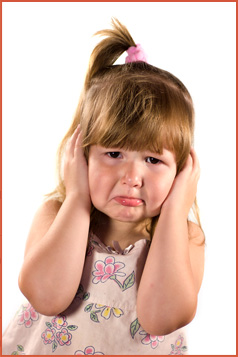 Child maltreatment is a complex and pervasive issue which impacts children globally. The harmful effects of child maltreatment are evident through its various forms – child abuse and neglect, children witnessing violence or coercive treatment, and unintentional injuries related to child maltreatment (Schnitzer & Ewigman, 2008). The serious emotional, psychological, or physical harm that a child experiences as a result of child maltreatment can negatively impact a child’s future life trajectory. The scars of child maltreatment can last a lifetime.
Child maltreatment is a complex and pervasive issue which impacts children globally. The harmful effects of child maltreatment are evident through its various forms – child abuse and neglect, children witnessing violence or coercive treatment, and unintentional injuries related to child maltreatment (Schnitzer & Ewigman, 2008). The serious emotional, psychological, or physical harm that a child experiences as a result of child maltreatment can negatively impact a child’s future life trajectory. The scars of child maltreatment can last a lifetime.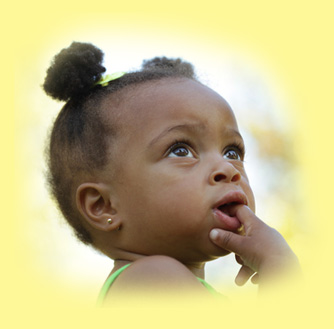 Permanent disability
Permanent disability
